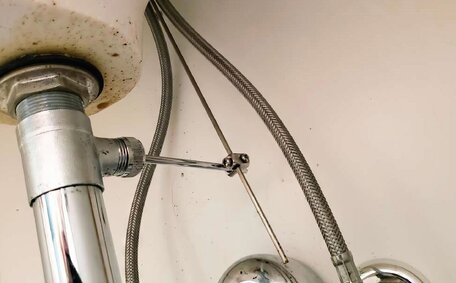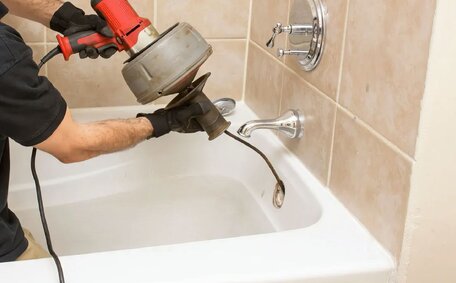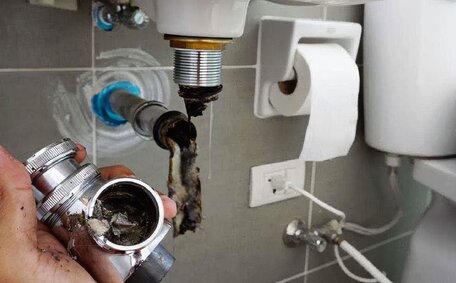Introduction to Pipe Relining
Pipe relining is a trenchless process used to repair damaged pipes without replacing them. It involves inserting a resin-impregnated liner into the existing pipe and curing it to form a smooth, seamless new pipe within the old one. Relining restores structural stability, flow capacity, and integrity to deteriorating pipes, extending their service life at a fraction of replacement costs.
Our team has extensive expertise in everything you need to know about pipe relining and other trenchless techniques.
In this article, we’ll discuss the key considerations about pipe diameter requirements for successful relining projects. Understanding sizing limitations and critical factors like pipe condition assessment enables us to advise customers on the best repair approach for their specific needs.
Minimum and Maximum Pipe Diameters for Relining
When it comes to pipe relining, there are some limitations on the minimum and maximum pipe diameters that can be successfully relined. Generally, pipes ranging from 50mm to 250mm in diameter can be relined.
The minimum diameter of 50mm exists due to technical constraints with inserting and curing the resin-impregnated relining material inside narrow pipes. Pushing the fabric liner into very tight bends or junctions also becomes difficult with smaller diameters. Going below 50mm risks an unsuccessful installation and liner failure over time.
At the upper limit, pipes over 250mm start to exceed the curing capabilities of most relining resins and UV light systems used. Proper curing ensures maximum liner strength and adhesion to the old pipe wall. Exceeding curing capacity risks under-cured areas leading to eventual failure.
It’s also important to understand that the relining process reduces overall pipe diameter by around 6mm due to the liner thickness. So a 100mm pipe would decrease to 94mm after relining. This diameter reduction is usually insignificant for drainage flows, however needs consideration where flow rates are critical.
By staying within 50mm to 250mm, we can ensure optimal results for nearly any residential or commercial relining application. Understanding these limits allows our team to advise on the best repair approach based on your pipe dimensions and performance requirements.
50mm - 100mm Diameter Pipes
Smaller diameter pipes from 50mm to 100mm are often found in residential settings and are ideal candidates for relining. At this smaller end of the range, issues with pipe structural integrity, leaks, and buildup restricting flow are common.
And the smooth, jointless interior surface of the epoxy or polyurethane liner enhances flow rates.
Despite losing around 3mm - 6mm of diameter from the liner thickness in a 50mm - 100mm pipe, flow capacities are often improved. Relining is a great solution as it restores pipe wall strength and seals leaks without the need for major drainage works.
For small domestic pipes, this diameter reduction is typically insignificant when considering the overall drainage system flows involved. However, a detailed condition assessment by our technicians considers flow rate requirements on a case-by-case basis before relining.
In summary, 50mm – 100mm diameter pipes can achieve excellent results from relining in many residential scenarios where flow demands are low to moderate. The relatively non-invasive nature combined with long-term durability makes it an ideal repair method.
100mm - 250mm Diameter Pipes
In commercial and industrial drainage systems, pipe diameters between 100mm to 250mm are common. At this larger size range, issues like internal corrosion, cracks, and root intrusion become increasingly detrimental to pipe integrity and functionality over time if left unaddressed.
Relining offers an effective in-situ repair method for 100mm to 250mm damaged pipes by restoring structural stability and sealing leaks without the major works of pipe replacement. The smooth epoxy or polyurethane liner inhibits buildup accumulation to maintain flow efficiency long-term.
However, for larger diameter pipes, the liner thickness accounts for a more substantial diameter reduction of around 6mm overall. The impacts on flow capacity need consideration before proceeding with relining.
Our technicians complete detailed pipe condition assessments and flow calculations to advise on suitability for relining in each unique case. Where flows are critical, we explore alternative repair approaches or active flow control measures to implement post-relining.
By understanding key factors like existing pipe state, cumulative diameter reduction effects, and building code requirements applicable to larger commercial systems, our experts can provide reliable relining advice and outcomes for all your pipe concerns.
Considerations for Different Pipe Types and Shapes
Pipe relining is compatible with a wide range of pipe materials and shapes beyond just traditional round sewer pipes. This versatility expands the possibilities for trenchless repair versus replacement.
When it comes to material types, relining can be used to restore metal, plastic, clay, and concrete pipes effectively. The resin liner bonds well within any pipe surface that provides adequate adhesion. Any existing buildup or corrosion needs clearing first for the best finish.
Relining also suits non-circular pipe shapes often found in commercial drainage systems. Rectangular or even vertical parallel pipes can be lined without issue provided they fall within the minimum 50mm diameter size.
Our detailed pipe inspections assess shape, dimensions and material compatibility to ensure suitability for relining. We’ll also check for any sections requiring pre-lining repairs or cleaning to achieve optimal adhesion results post-installation.
By taking the whole pipe system into account, our specialists can provide accurate advice on relining feasibility regardless of pipe type and shape involved.
Bends and Junctions
When it comes to relining pipe systems, bends and junctions require some special considerations compared to straight pipe sections. The flexibility of the resin-impregnated liner enables it to navigate moderate bends, however sharp 90-degree bends or multi-angle junctions can prove more challenging.
Our technicians use specialised installation techniques like trim cuts and seamless liners to suit these complex pipe geometries. Strategic trim cuts relieve tension allowing the liner to conform smoothly to tight bends. 3D custom-fitted liners are also engineered to cater for unique junction shapes.
We also take care through the curing process to ensure proper adhesion and strength is achieved consistently along the entire length. Additional curing heads, reorientation, and time in difficult areas helps accomplish integrated lining through complex sections.
By assessing the specifics of your pipe system’s problem bends and junctions, we expertly advise on solutions and carry out the relining procedure for reliable, long-term results.
Parallel and Rectangular Pipes
Beyond standard round piping, parallel and rectangular pipes are often found in commercial drainage systems. Despite their non-circular geometry, trenchless relining provides an effective repair solution.
We utilise specialised oval-shaped liners and installation processes to accommodate the unique shapes and dimensions. The liners are flexible to navigate bends then inflate to conform smoothly to the pipe walls for curing.
Maintaining non-circular pipes can be more complex than typical sewer lines. But relining avoids the major replacement works normally faced with other repair methods. By assessing pipe condition, dimensions and flow considerations first, we advise on long-term relining suitability.
For difficult-to-access pipes in basement or suspended levels, relining rectangular or parallel pipework poses significantly less building impact than traditional repairs. With expert analysis and precise liner installation, durable results are achieved.
Preparing Pipes for Relining
Before any relining project, thorough pipe preparation is critical to ensure success. The process begins with detailed cleaning using high-pressure water jetting to remove built-up debris, corrosion and old liner materials if present.
We then complete a comprehensive video inspection. Our pipe camera systems provide visibility of the full pipe length while precisely identifying any damaged sections or remaining obstacles. Measurements of diameters, junction angles and bend radiuses are also taken.
The footage lets our technicians evaluate the current pipe condition and geometry to determine if relining is suitable. We check for adequate structural integrity, no seriously degraded areas, and there is sufficient access and dimension for liner insertion.
Any sections not meeting requirements are repaired. Small cracks and holes get sealed while severely corroded areas may need patching or replacement. The result is a smooth, clean conduit ready for the new liner.
While thorough pipe prep requires effort upfront, it ensures every variable is addressed for long-lasting, trouble-free results post-relining. The process allows our experts to guarantee reliability based on the actual pipe state prior to installation.
Inspections and Measurements
Performing detailed inspections and measurements is a critical aspect of our relining evaluation process. We utilise CCTV drain cameras to thoroughly survey the full length of pipework visually. Our technicians can accurately measure internal pipe diameters at multiple points using the camera footage.
These measurements let us confirm the existing pipe dimensions fall within the feasible range for relining between 50mm to 250mm. Documenting the dimensions at various locations also helps identify potential blockages or deformed sections that could hinder liner installation if left unaddressed.
diameter checks, our camera inspections pinpoint damage areas, leaks, obstacles and pipe material compatibility for relining. By assessing the complete pipe condition, geometry and access aspects in this way, our specialists can advise on relining viability and any preparatory repairs required beforehand.
Undertaking professional CCTV drainage inspections is a key part of building expertise and trustworthiness around our trenchless repair recommendations. We stand behind the relining solutions and outcomes we prescribe based on the real-time data gathered by our technician’s in-pipe camera assessments.
Cleaning the Pipes
Thoroughly cleaning pipes prior to relining is a critical preparatory step. Old pipe materials, corrosion, grease buildup, and other debris must be removed to allow proper adhesion and curing of the new liner.
We utilise high-pressure water jetting to scour the pipe interior. The 4000psi water blast scrubs away aged liner materials, scales, and accumulated solids while clearing major blockages. Any remaining coatings or debris are hand scraped clean for optimal bonding surface.
Proper pipe cleaning clears the way for the liner to make direct contact with the original pipe wall. Maximising this adhesion strength prevents future ingress of roots or groundwater that could lead to liner failure.
This allows the resin to cure and adhere firmly to the existing structure rather than sitting atop remnants of old material or dirt.
In rare cases where high-pressure water jetting could worsen pipe damage, mechanical scraping or alternative cleaning methods may be used. Our camera inspections post-cleaning ensure the pipes are fully prepared for a successful relining installation.
While an intensive process, thorough pipe cleaning is the necessary first step in ensuring the relined pipe system provides long-term, hassle-free performance. Our expertise in pipe preparation contributes significantly to the quality outcomes we provide across all trenchless repair projects.
When to Choose Pipe Relining
Pipe relining is the ideal repair solution for drainage systems experiencing leaks, cracks, blockages or loss of structural stability. It restores pipe integrity at a fraction of replacement costs while minimising property impact.
We recommend relining when pipes are still fundamentally intact but deteriorated. Sections with moderate cracking or corrosion can be sealed effectively, extending the pipe lifespan substantially. Relining prevents further damage cost-effectively compared to full replacement.
Relining also suits scenarios where pipe access is limited or excavation difficulties exist. The trenchless method is vastly less invasive than digging trenches for replacement piping.
For smaller diameter pipes down to 50mm, relining preserves flow capacity despite the slight diameter reduction. And in larger commercial systems, we ensure any lining for pipes over 100mm adheres to applicable building codes for minimum drainage diameters.
By assessing pipe condition, dimensions, property factors and regulating requirements, our specialists reliably advise on optimal relining suitability. Where codes or flows demand specific pipe diameters, we explore alternative repair solutions as needed.
Long-Term Effectiveness of Pipe Relining
Pipe relining provides long-term effectiveness by restoring and even enhancing pipe performance. The smooth, jointless epoxy or polyurethane liner seals existing cracks and holes while providing a protective barrier against future root intrusion or corrosion.
By inhibiting debris buildup and flow obstruction, the glass-like liner surface maintains optimal drainage capacity long after traditional pipe materials would experience reductions. This self-cleansing property is critical for commercial systems to adhere to regulatory requirements.
With over a decade of trenchless repair expertise, Sans Souci Plumbing stands behind the long-term results of our professional pipe relining services. For reliable relining solutions or any plumbing need, residents across Sans Souci, Sydney, can reach us on 1300 349 338 or email [email protected].






